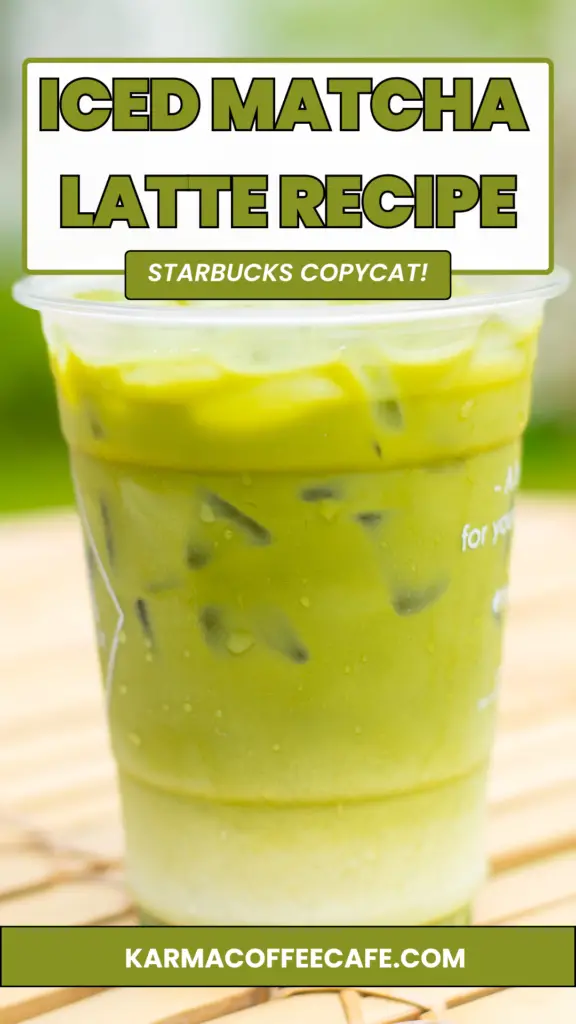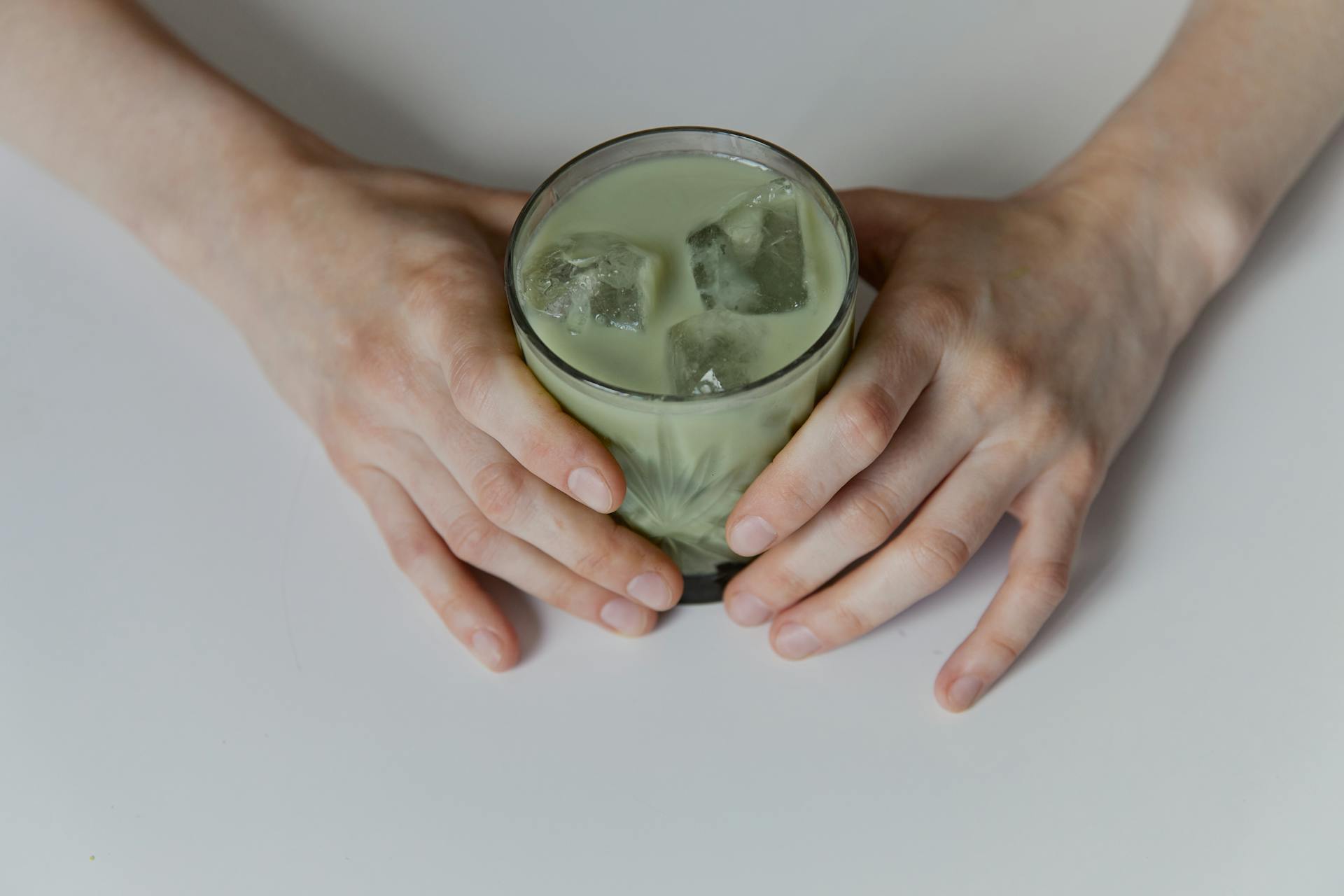Looking for a refreshing, delicious drink to cool you down?
The Iced Matcha Latte is a perfect choice!
This popular Starbucks beverage combines the rich, earthy flavor of matcha with creamy milk and a touch of sweetness.
Making it at home is not only more affordable but also allows you to customize it to your taste and dietary needs.
Plus, you’ll know exactly what goes into your drink, making it a healthier option.
Ready to recreate this Starbucks favorite in your kitchen? Let’s get started!
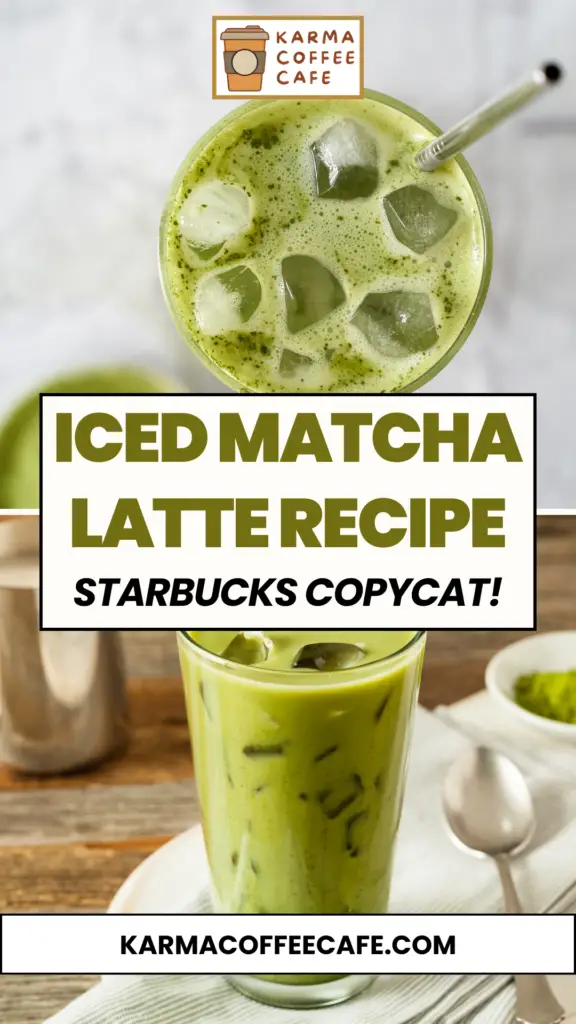
How To Make An Iced Matcha Latte: At A Glance
- Step 1: Prepare the Simple Syrup (Optional)
- Step 2: Mix the Matcha
- Step 3: Sweeten the Milk
- Step 4: Assemble the Drink
- Step 5: Serve and Enjoy!
Ingredients and Equipment
Ingredients
Matcha Powder (1-2 Teaspoons)
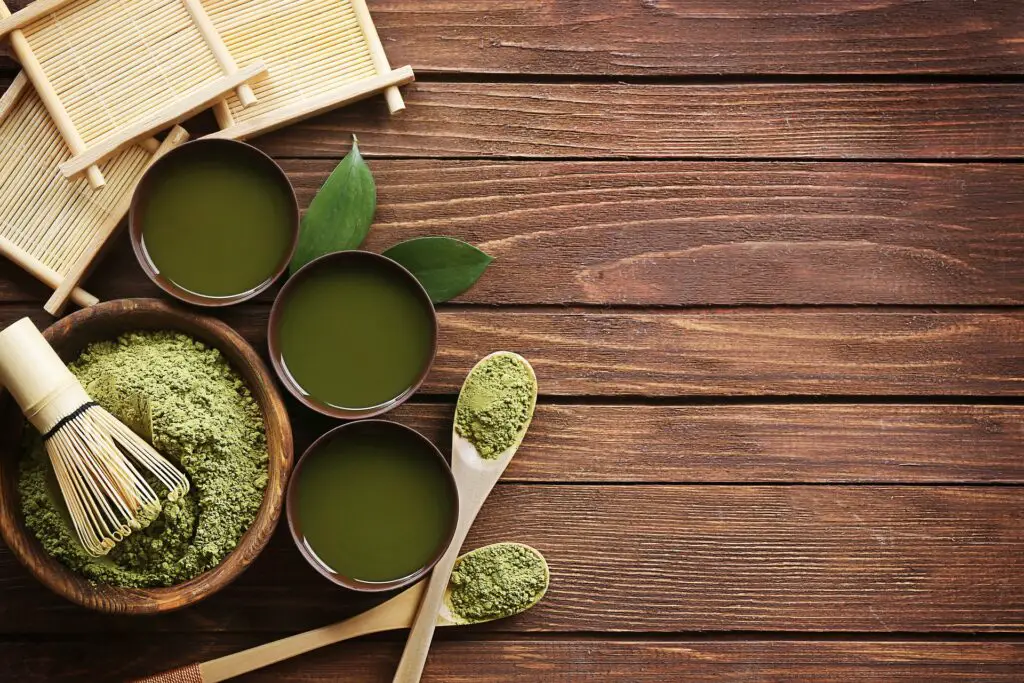
Matcha powder is the star of the show.
You can choose between ceremonial grade or culinary grade matcha.
Ceremonial grade offers a more refined, delicate flavor, while culinary grade is robust and perfect for lattes.
Milk (1 Cup)
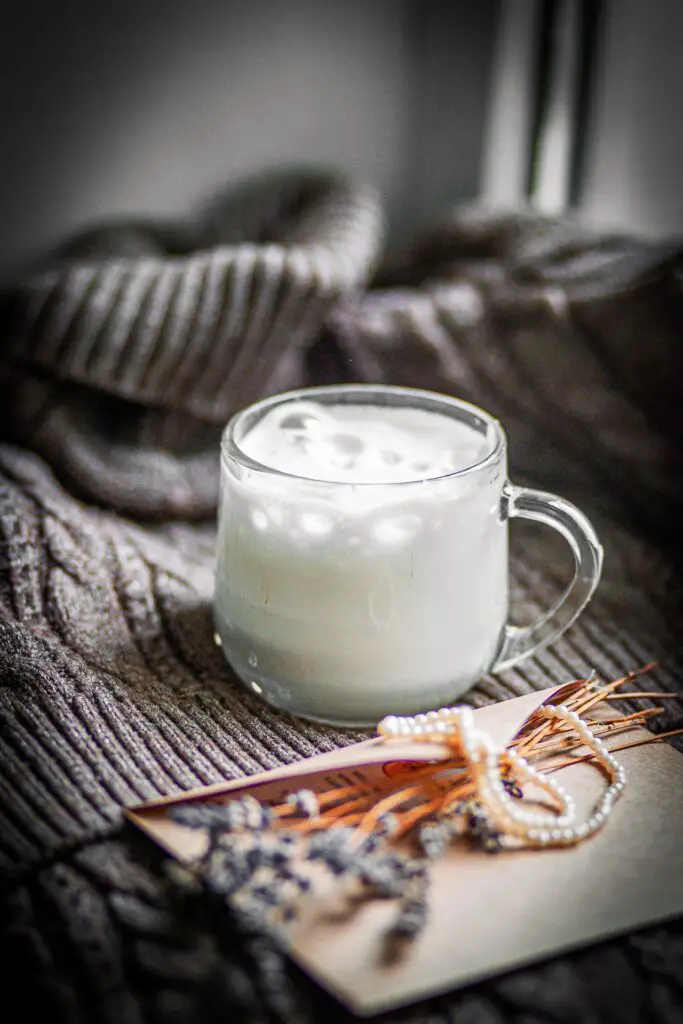
Select the milk that suits your preference.
Options include cow’s milk, almond milk, oat milk, soy milk, and coconut milk.
Each type of milk adds its own unique flavor and texture to your iced matcha latte.
Sweeteners (1 Tablespoon)
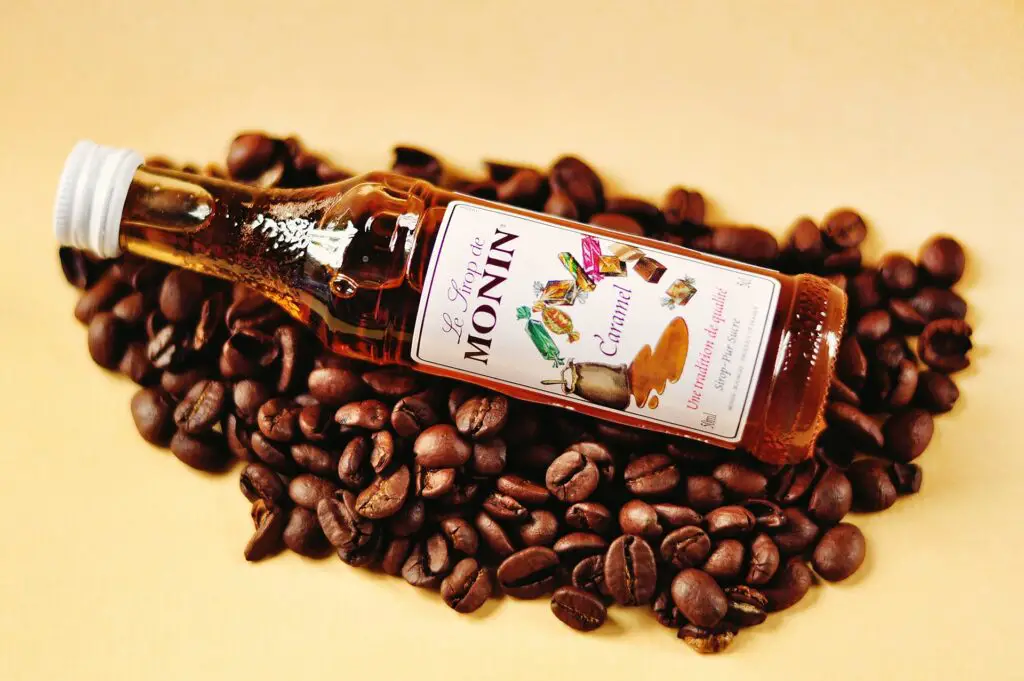
Customize your latte with your choice of sweetener.
Vanilla syrup, honey, maple syrup, or simple syrup all work wonderfully.
Adjust the sweetness to your liking.
Water (4 Tablespoons)
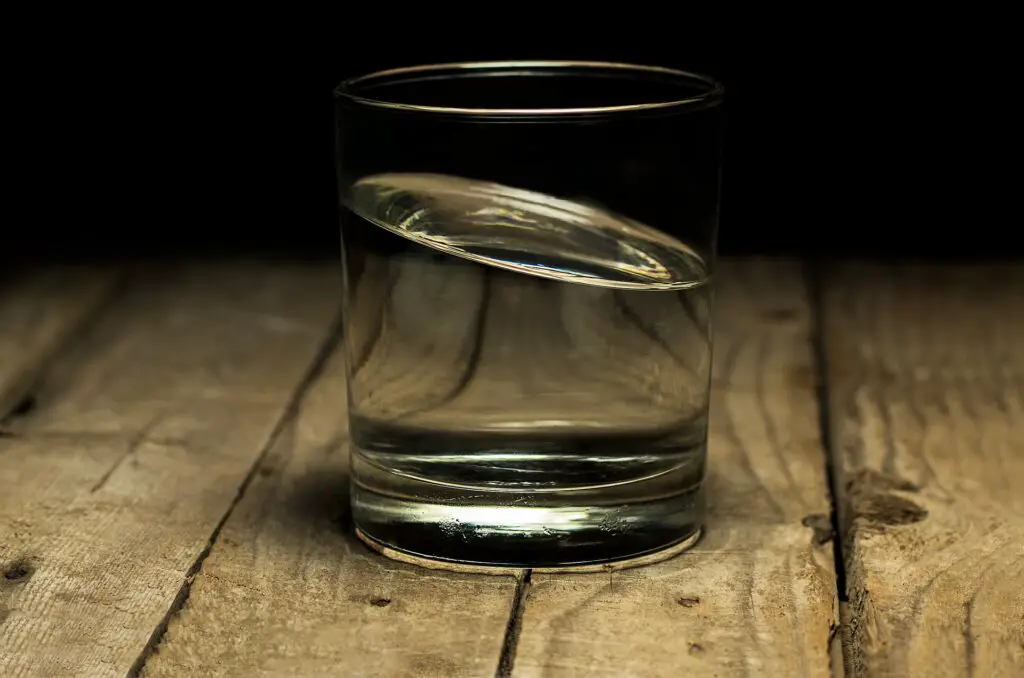
A small amount of water is used to help dissolve the matcha powder before mixing it with the milk.
Ice (1 Cup)
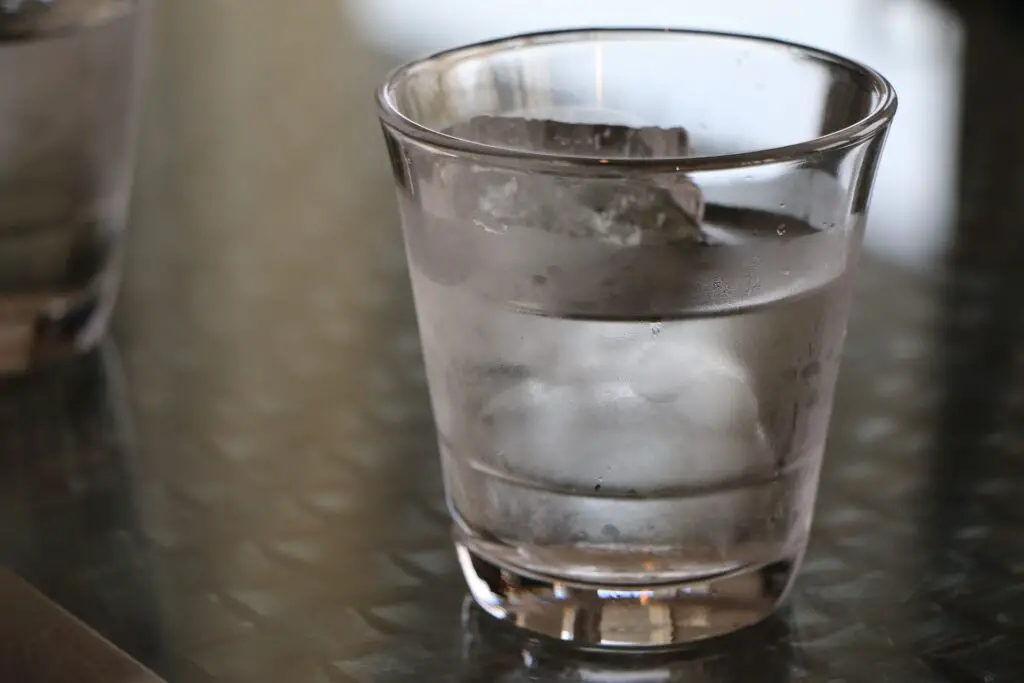
Ice is essential for that refreshing cold kick.
Make sure to have plenty on hand.
Equipment
Milk Frother or Matcha Whisk

A milk frother or matcha whisk is crucial for mixing the matcha powder smoothly into the water and milk.
This helps to create a creamy, lump-free texture.
Blender (Optional)
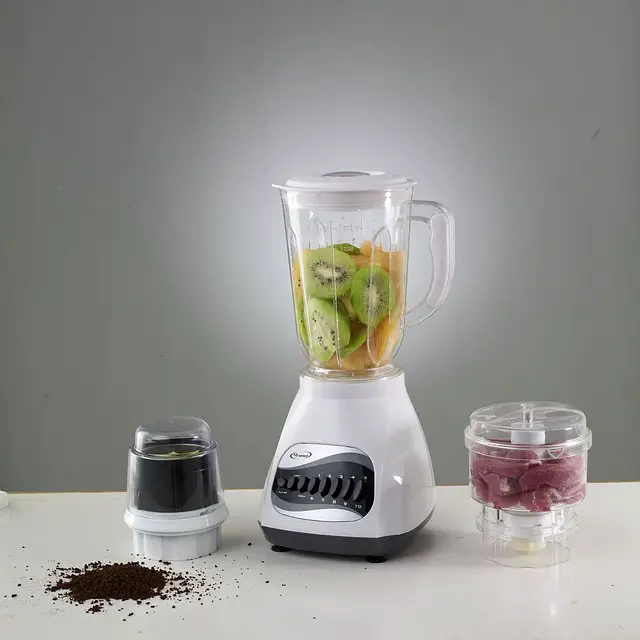
A blender can be used as an alternative to a frother or whisk.
It’s especially useful if you’re making multiple servings at once.
Sifter
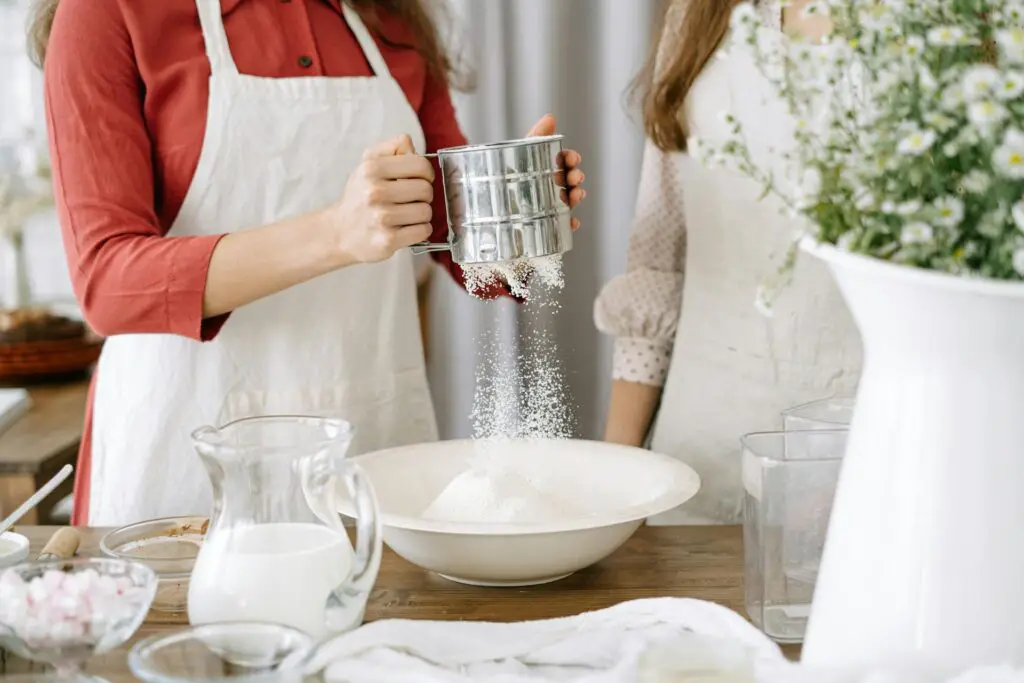
Sifting the matcha powder before mixing it ensures there are no lumps, making the blending process easier and the final drink smoother.
Measuring Cups and Spoons
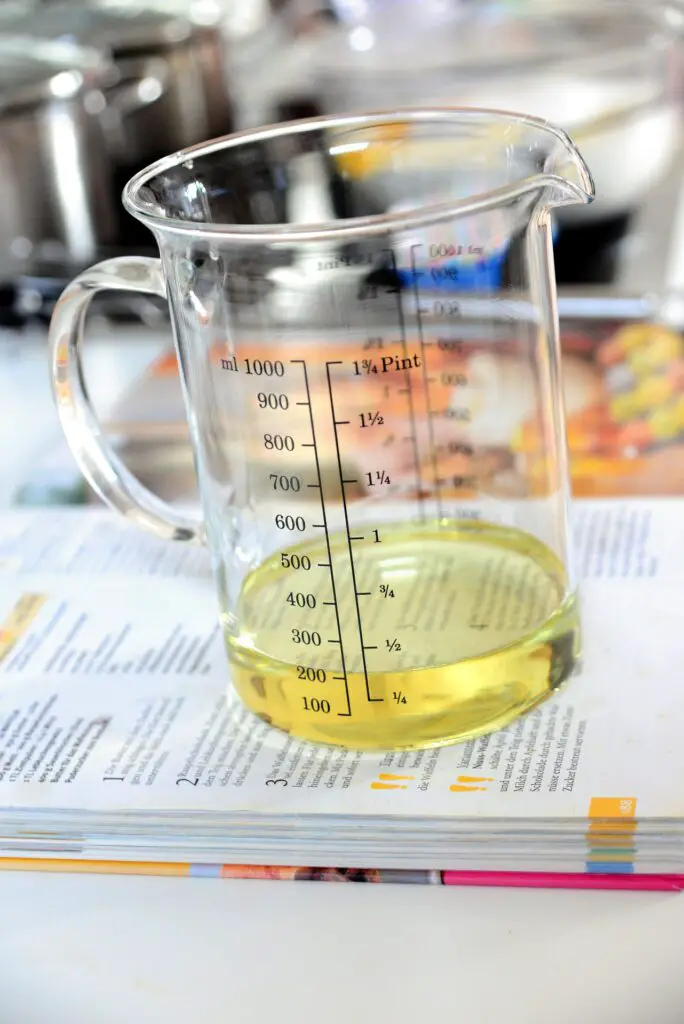
Accurate measurements are key to achieving the perfect balance of flavors.
Use measuring cups and spoons to ensure you get the right amounts of each ingredient.
Step-by-Step Recipe
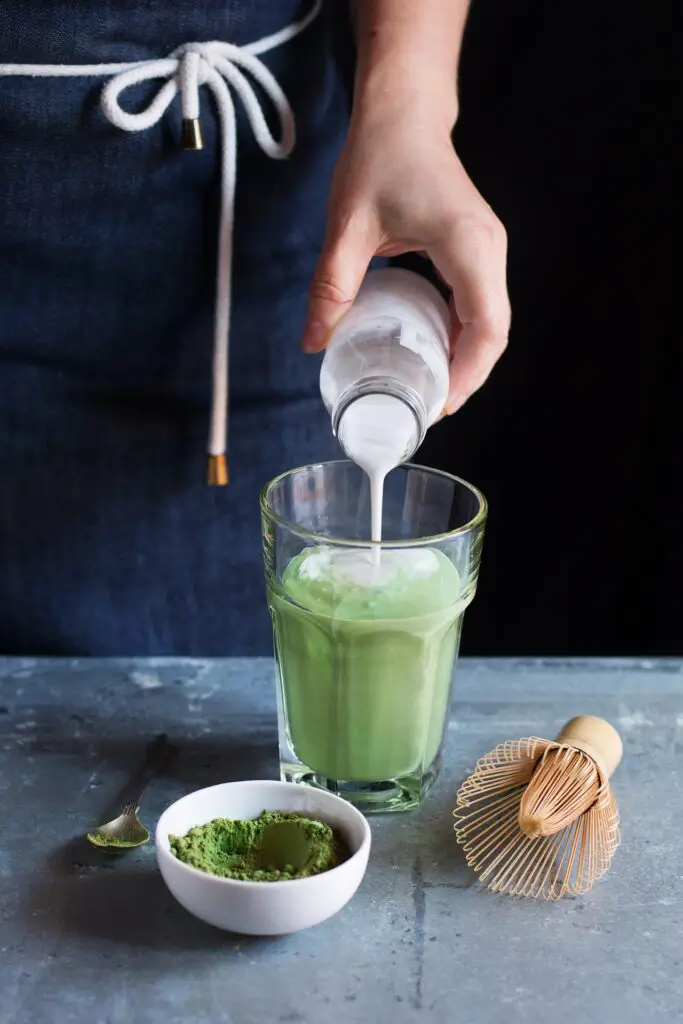
Step 1: Prepare the Simple Syrup (Optional)
If you prefer your iced matcha latte sweetened, making a simple syrup is a great option.
Combine equal parts sugar and water in a small saucepan.
Heat the mixture over medium heat, stirring occasionally, until the sugar is completely dissolved.
Once dissolved, remove from heat and let the syrup cool to room temperature.
This syrup can be stored in the refrigerator for future use.
Step 2: Mix the Matcha
To ensure a smooth, lump-free latte, start by sifting the matcha powder.
This step helps to break up any clumps and makes the powder easier to mix.
Next, place the sifted matcha into a bowl.
Add a small amount of hot water—just enough to cover the powder—and whisk vigorously using a matcha whisk or a regular whisk until the matcha is fully dissolved and frothy.
Step 3: Sweeten the Milk
In a separate container, combine your choice of milk with vanilla syrup or your preferred sweetener.
Stir well to ensure the sweetener is evenly distributed throughout the milk.
Adjust the amount of sweetener to suit your taste.
Step 4: Assemble the Drink
Now it’s time to bring everything together.
Start by filling a glass with ice.
Pour half of the sweetened milk over the ice, creating a cool base layer.
Next, take the matcha mixture and combine it with the remaining milk.
Use a frother or whisk to blend the matcha and milk together thoroughly.
Once mixed, pour the matcha milk over the ice and milk in the glass.
This creates a beautiful layered effect that looks as good as it tastes.
Step 5: Serve and Enjoy
Your iced matcha latte is ready to enjoy!
For an extra touch, you can garnish it with a dollop of whipped cream or a sprinkle of matcha powder on top.
Variations and Tips

Flavor Variations
One of the best things about making an iced matcha latte at home is the ability to customize the flavor.
Here are a few ideas to add a unique twist to your drink:
Flavored Syrups
Swap out the vanilla syrup for something different.
Try white chocolate mocha or caramel syrup for a richer, more indulgent flavor.
These syrups blend well with matcha and add a delicious sweetness.
Fruit-Flavored Syrups
For a tropical twist, add a splash of fruit-flavored syrup.
Pineapple or mango syrup can give your matcha latte a refreshing, fruity kick.
This is perfect for summer and adds a vibrant new dimension to the drink.
Dietary Adjustments
Whether you’re following a specific diet or just prefer certain ingredients, there are plenty of ways to adjust this recipe to fit your needs:
Vegan
To make a vegan iced matcha latte, use plant-based milk such as almond, soy, oat, or coconut milk.
Sweeten it with natural sweeteners like maple syrup or agave nectar.
These alternatives are not only vegan but also add their own subtle flavors to the latte.
Keto/Low-Carb
For a keto or low-carb version, use unsweetened almond milk and a sugar-free sweetener like erythritol or monk fruit.
These options will keep your latte low in carbs while still providing a satisfying sweetness.
Mixing Techniques
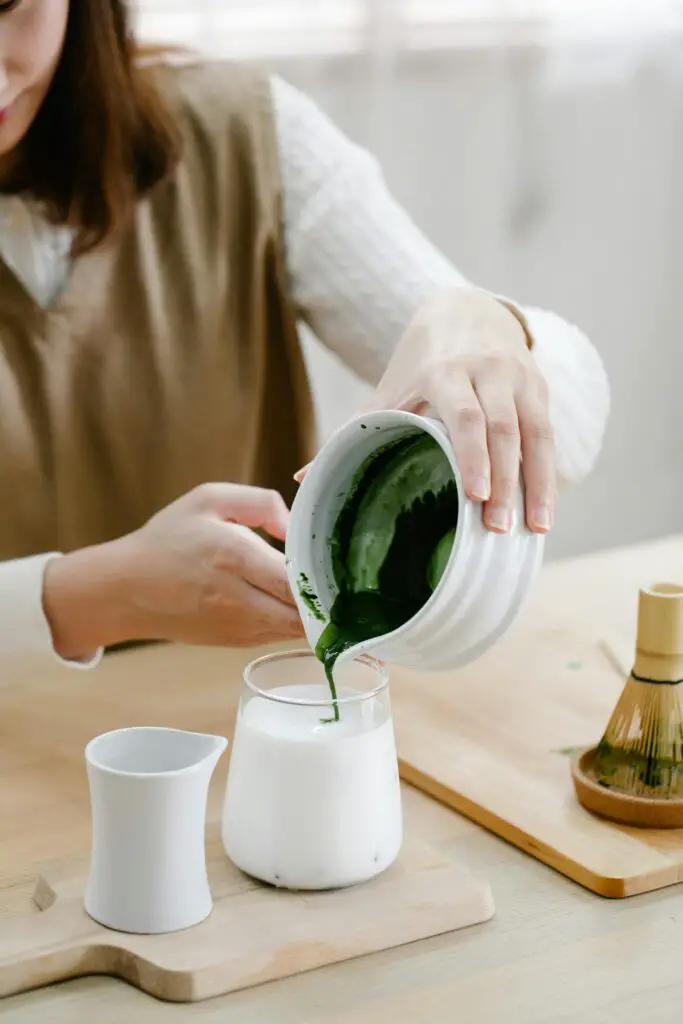
How you mix your matcha can significantly affect the texture and consistency of your latte.
Here are two effective methods:
Blender Method
Using a blender can give your latte a frothier texture, similar to what you’d get from a café.
Simply blend the matcha powder with a small amount of hot water, then add the milk and sweetener before blending again.
This method ensures everything is well-mixed and smooth.
Shaker Method
For a quicker and easier option, try the shaker method.
Combine all your ingredients in a shaker bottle and shake vigorously until well-mixed.
This method is great for when you’re in a hurry but still want a smooth, well-blended drink.
Nutritional Information
Calories per Serving
An iced matcha latte typically has around 206 calories per serving.
This includes the calories from matcha powder, milk, and the chosen sweetener.
Adjustments in ingredients can slightly alter the calorie count.
For instance, using almond milk and a low-calorie sweetener will reduce the calorie content compared to using whole milk and sugar.
Comparison of Homemade Versus Starbucks Version
A homemade iced matcha latte is generally more customizable and can be healthier than the Starbucks version.
Here’s a breakdown:
Homemade Iced Matcha Latte
- Calories: Approximately 206 per serving
- Customizable sweetness and milk options
- Potentially lower sugar content depending on sweetener choice
- Made with pure matcha powder
Starbucks Iced Matcha Latte
- Calories: Around 200-250 for a Grande size, depending on the milk choice
- Uses a pre-sweetened matcha mix containing sugar
- Fixed sweetness level, less customizable
- Typically contains more sugar
Benefits of Using High-Quality Matcha
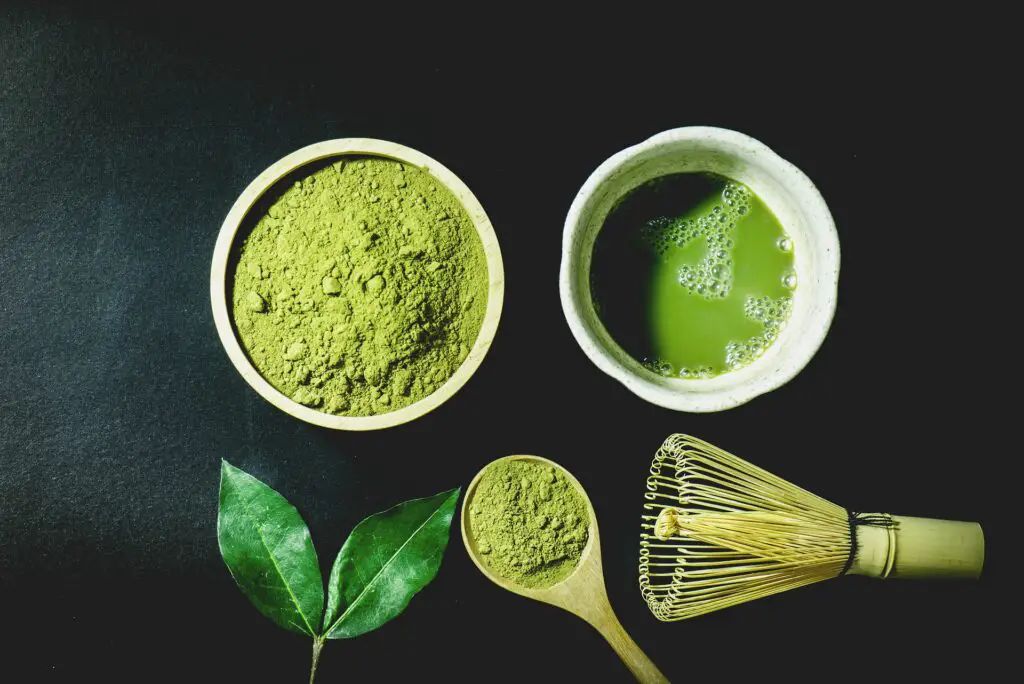
Using high-quality matcha powder has several benefits:
Better Flavor
High-quality, ceremonial-grade matcha provides a smoother, less bitter taste compared to lower grades.
This can enhance the overall flavor of your latte, making it more enjoyable to drink.
Higher Nutrient Content
High-quality matcha is rich in antioxidants, particularly catechins like EGCG, which have numerous health benefits, including reducing the risk of chronic diseases.
It also contains vitamins A, C, and E, as well as minerals like potassium and iron.
Sustained Energy
Matcha contains a natural combination of caffeine and L-theanine.
This duo provides a sustained energy boost without the jittery feeling that coffee can sometimes cause.
L-theanine promotes relaxation and mental clarity, making matcha a perfect choice for a calm, focused energy lift.
Healthier Choice
Using pure matcha powder without added sugars or artificial ingredients ensures that you get all the health benefits without unnecessary additives.
High-quality matcha is typically grown and processed with more care, ensuring that you get a cleaner, healthier product.
Conclusion
Making a homemade iced matcha latte is not only cost-effective but also allows for complete customization to suit your taste and dietary needs.
Experiment with different milks and sweeteners to find your perfect blend.
Enjoy the health benefits of high-quality matcha and the satisfaction of crafting your own refreshing drink at home.
Try out different variations and share your experiences in the comments below.
We’d love to hear your feedback and any unique twists you’ve added to your latte!
FAQs
What is Matcha?
Matcha is a type of powdered green tea originating from Japan.
It’s made from finely ground tea leaves, which are shade-grown for several weeks before harvest to increase their chlorophyll content and enhance the flavor.
This process gives matcha its vibrant green color and rich, earthy taste.
Unlike regular green tea, where you steep the leaves and discard them, with matcha, you consume the entire leaf, maximizing its health benefits.
Best Milk to Use?
Choosing the right milk can make a significant difference in your iced matcha latte.
Here’s a quick comparison:
- Cow’s Milk: Creamy and rich, provides a classic taste.
- Almond Milk: Slightly nutty flavor, low in calories.
- Oat Milk: Creamy texture, naturally sweet.
- Soy Milk: High in protein, neutral taste.
- Coconut Milk: Adds a tropical twist, slightly sweeter.
How to Store Leftovers?
To store leftovers, pour your iced matcha latte into an airtight container and keep it in the fridge.
It’s best consumed within 24 hours to maintain freshness and flavor.
If you prefer to make your latte ahead of time, prepare the matcha mixture and store it separately from the milk.
Combine them just before serving to ensure the best texture and taste.
Does Matcha Have Caffeine?
Yes, matcha does contain caffeine.
On average, one serving (about 1 teaspoon) of matcha powder contains approximately 70 milligrams of caffeine.
This is less than a typical cup of coffee, which has about 95 milligrams per serving.
However, matcha provides a more stable energy boost, thanks to the presence of L-theanine, an amino acid that promotes calmness and alertness without the jitters associated with coffee.
